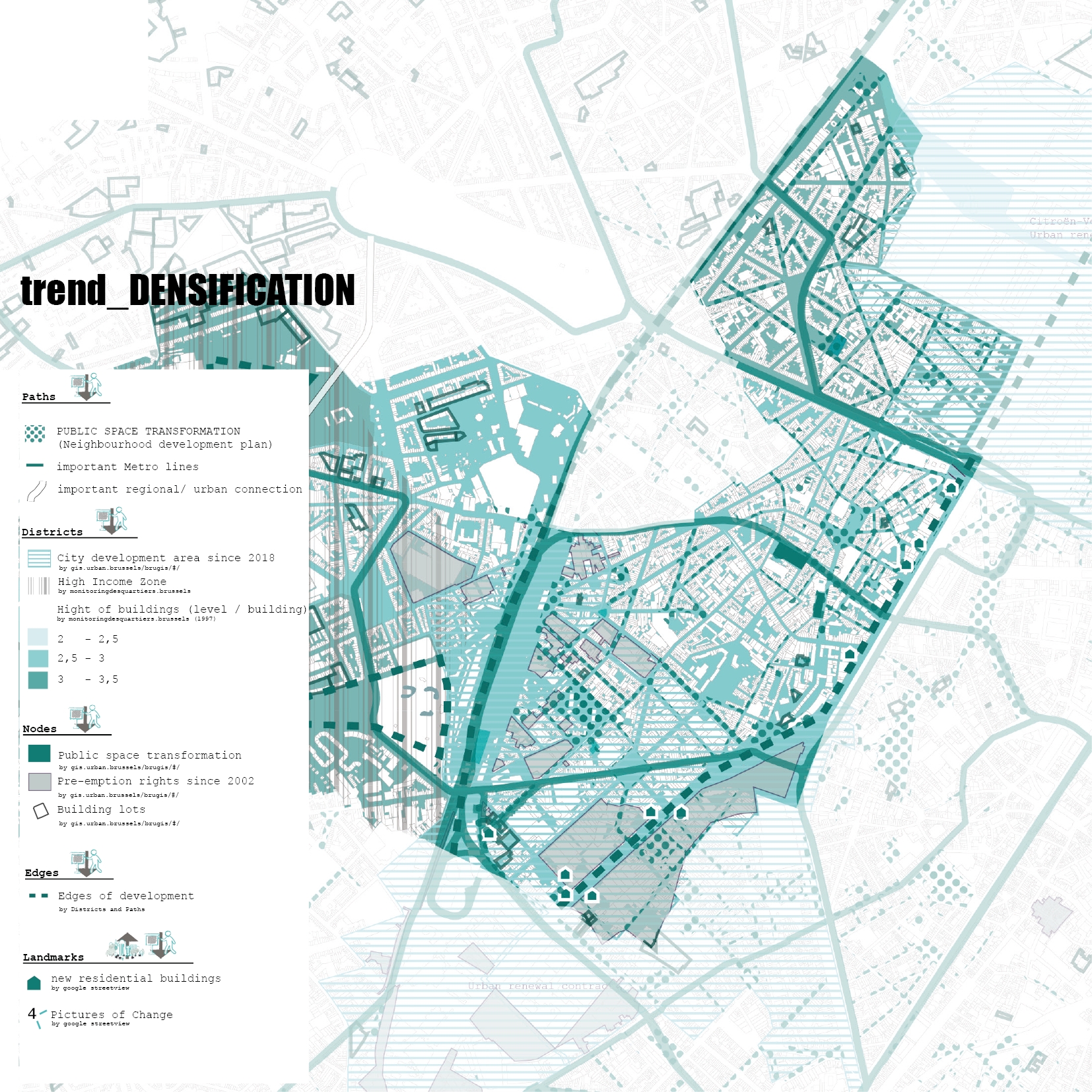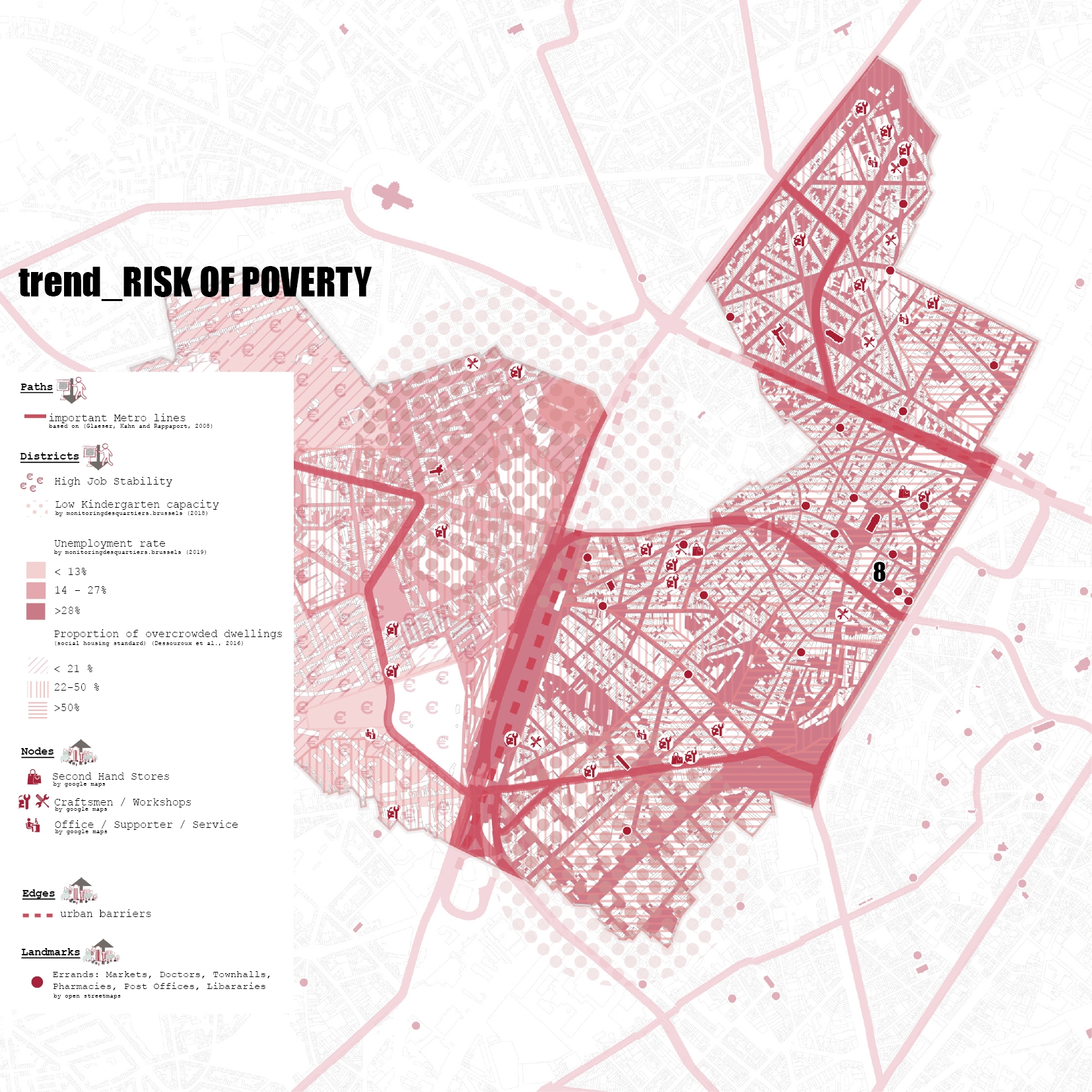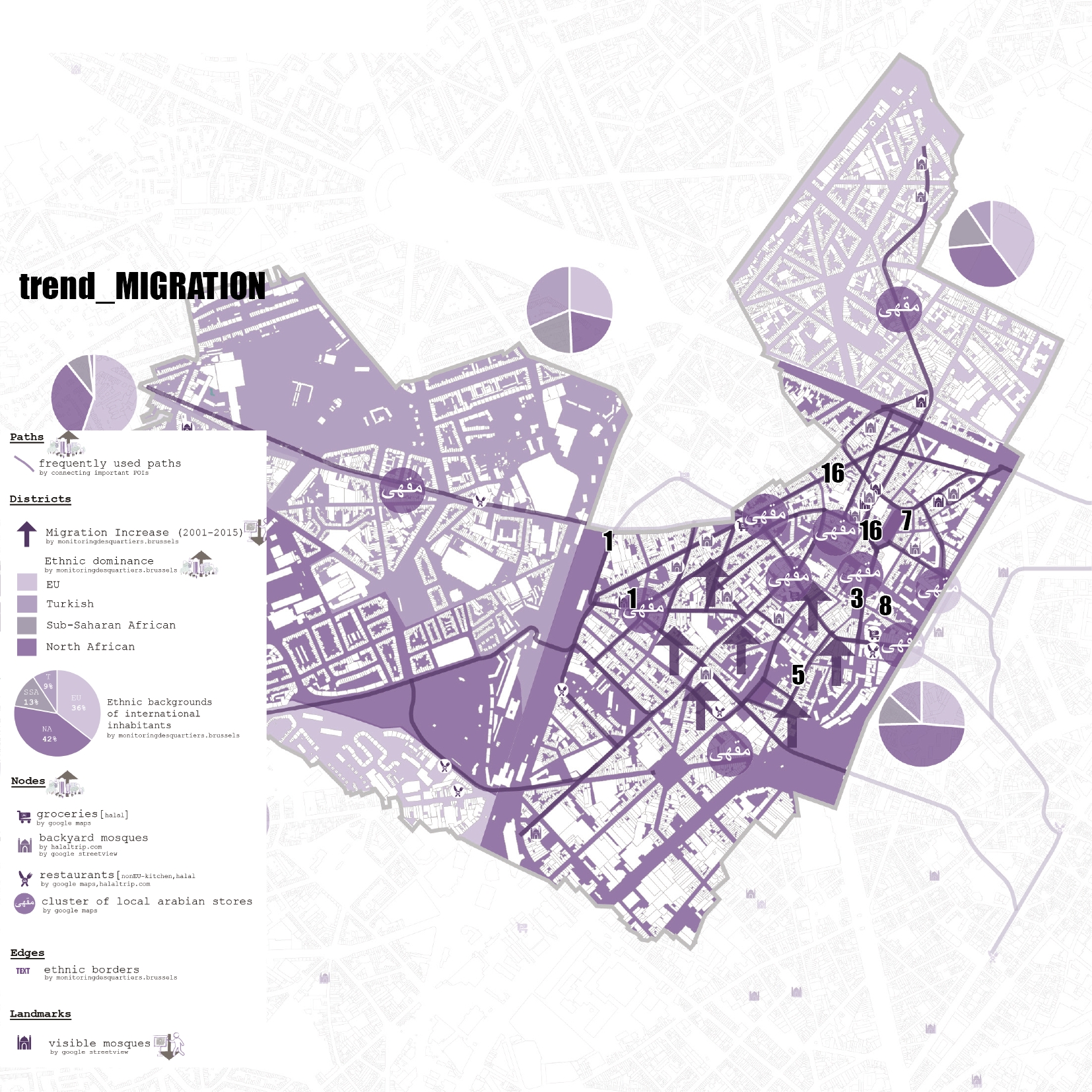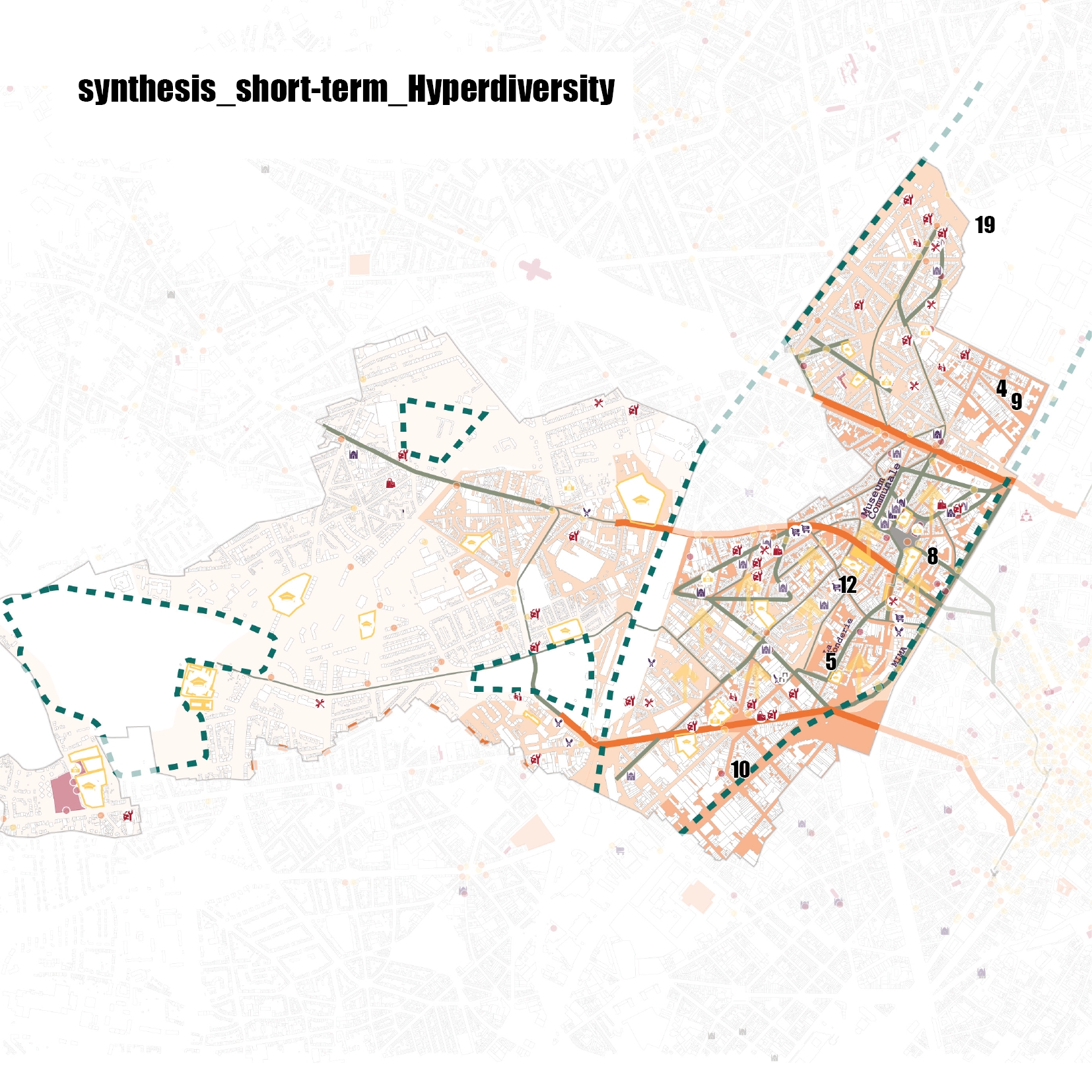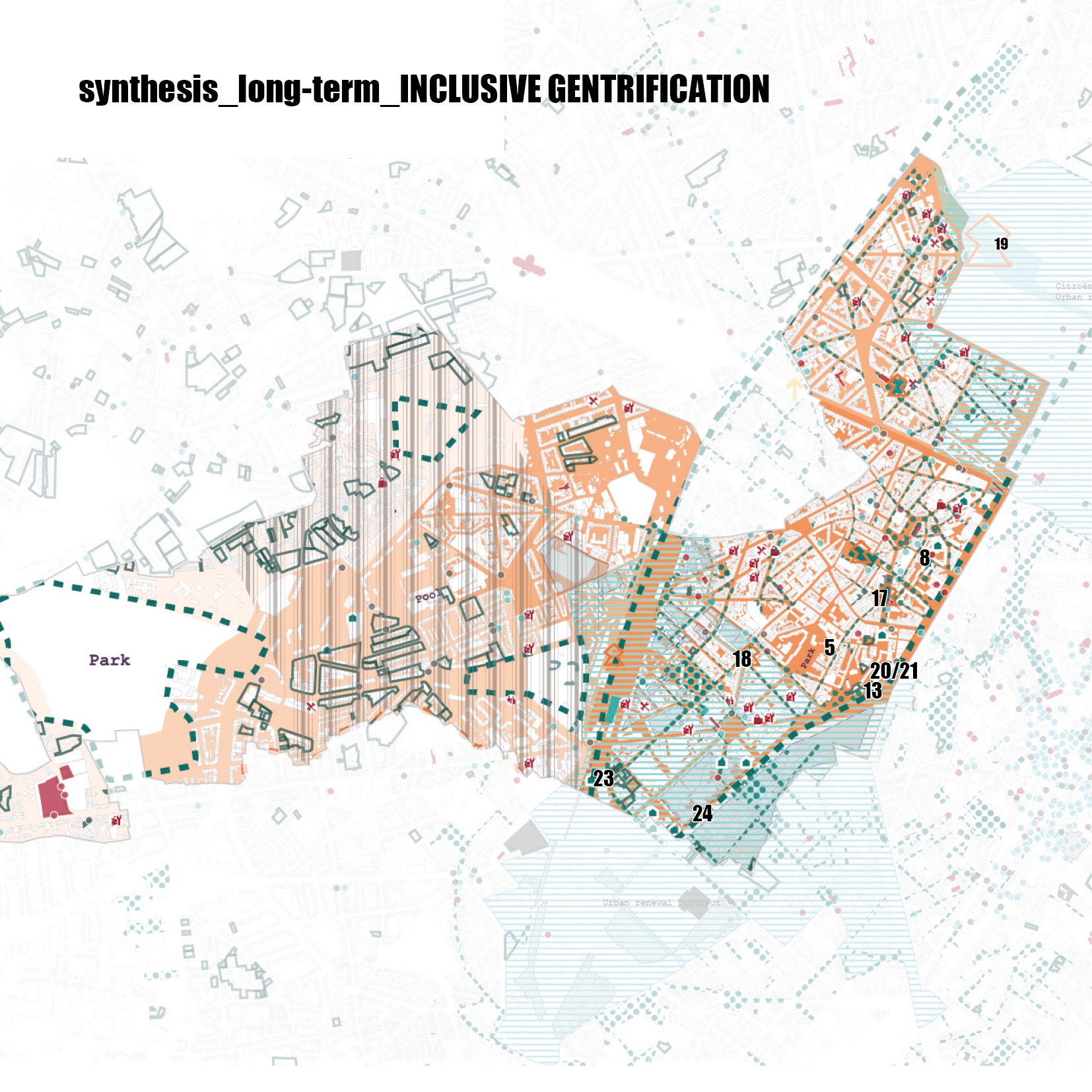THE CHANGING IMAGE OF MOLENBEEK: Crowd-driven transformations within a stigmatized district
A project by Amal Al Balushi, Sophie Knoop, Yongwei Li and Stephanie Tanneberger
Multiple Scales: Brussels SML
Lecturers: Univ.-Prof. Dr.-Ing. Agnes Förster and Martin Bangratz
winter semester 2020/21
Molenbeek is a district of Brussels that has been stigmatized and stereotyped. Initial results on Google search show many articles discussing its connections to terrorism. Of search terms related to Molenbeek, Military, Marches and Cartoon are amongst the first ones presented. These terms have undertones that link themes on Islam, crime, and terror within the area. There also exists a conversation on changing this image; with reports on initiatives trying to shed the terror-stronghold reputation.
This study assesses how (and if) the image of the city has changed, and who are the forces attempting to influence changes. Using Kevin Lynch’s image of the city, the spatial configuration and Molenbeeks’ place-brand online over a 10-year period were examined (2009-2019).
Socio-economic and virtual data was gathered on Molenbeek from an array of sources; Official statistics were collected from governmental portals and reports, while commentaries on the area were taken from news articles and open access inputs like Google, Twitter and Instagram mentions. From the data gathered, trends were identified in Migration, Densification and Risk of poverty in the area. Actions handled by top-down or bottom-up stakeholders were also identified and mapped.
We found the trends and actions taken are heading towards increases in hyperdiversity and gentrification. Top-down approaches are attempting to remove the signs of current problems, instead of looking for the root of the problems and dealing with them, while bottom-up input happens more on the social and virtual levels. Ultimately, Molenbeeks’ online image is argued as continuously negative up to now. However, the analysis indicates a positive image change beginning to take root. Finally, we suggest that the potential gentrification of Molenbeek should be used as a means for an intercultural and inclusive top-down managed and bottom-up developed future.
